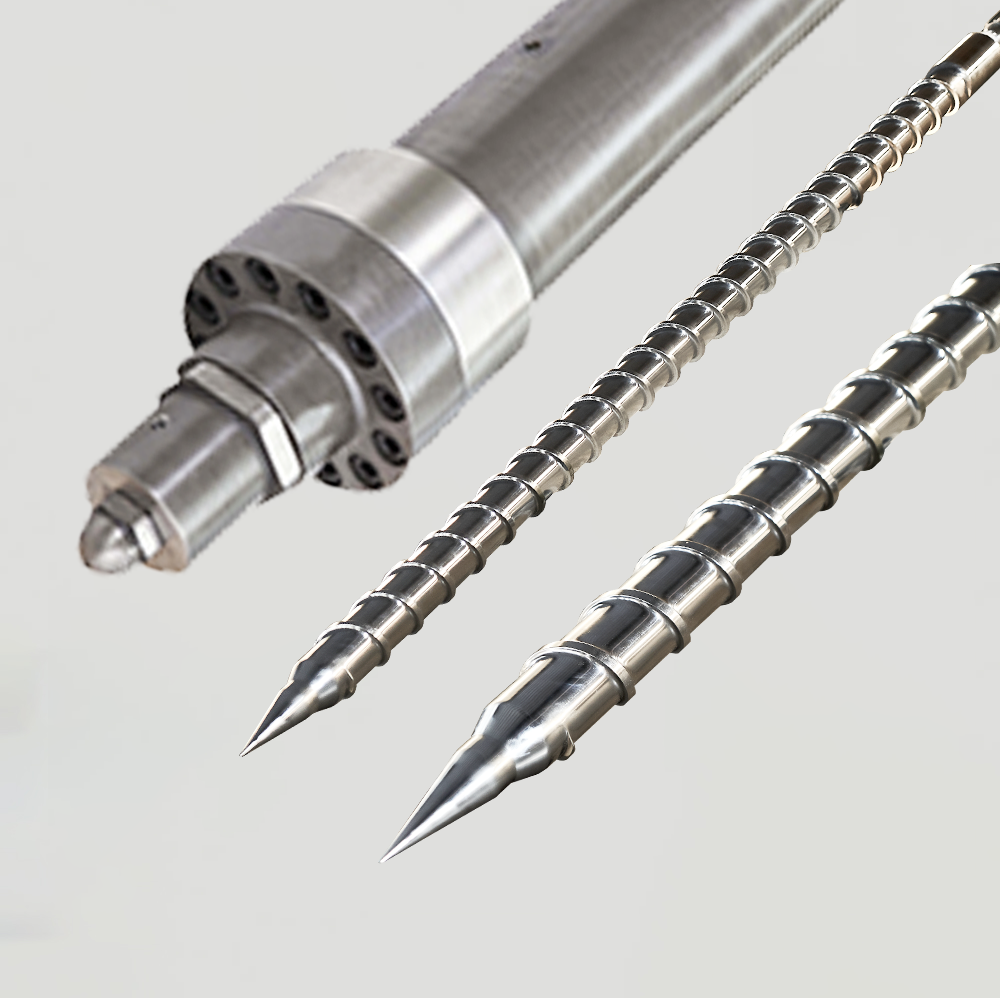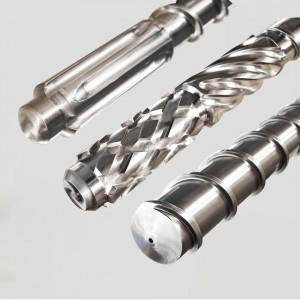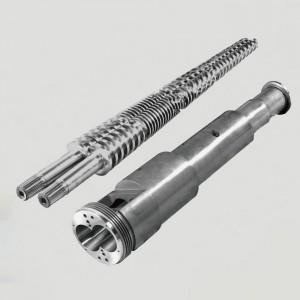
Manufacturers often notice changes in product quality or machine performance as early signs of a Plastic Injection molding screw barrel malfunction. Quick action limits downtime and prevents major losses. Delayed repairs at an Injection Screw Factory can lead to significant costs, as shown below:
| Cost Factor | Impact Example |
|---|---|
| Replacement cost of screws | Thousands to tens of thousands of yuan |
| Maintenance fee per machine | 1,500 RMB per maintenance |
| Losses from production inefficiencies | Hundreds of thousands to millions yearly |
Operators who quickly identify root causes can protect equipment like the Injection Molding Machine Screw Barrel and even Twin-Screw Extruder Screw Barrels from further damage.
Identifying Plastic Injection Molding Screw Barrel Malfunctions

Warning Signs to Watch For
Operators often notice early warning signs before a major malfunction occurs. These signs help prevent costly downtime and protect the Plastic Injection molding screw barrel. Common symptoms include:
- Inconsistent product quality, such as color streaks or incomplete fills
- Unusual noises, like grinding or knocking, during machine operation
- Fluctuating melt temperatures or pressure readings
- Visible wear, scratches, or pitting on the screw or barrel surface
- Increased cycle times or sudden drops in production speed
Tip: Regularly check for leaks, vibrations, and changes in machine behavior. These small changes often signal bigger problems inside the screw barrel.
Abrasive fillers, such as glass fiber or talc, can cause wear on the screw flights and barrel lining. Corrosive resins may lead to pitting and corrosion. Poor heat control often results in resin degradation and carbon buildup, which accelerates wear. Misalignment from improper installation or bearing wear can cause uneven rubbing and vibration.
Diagnostic Steps for the Screw Barrel
Technicians use several advanced methods to diagnose screw barrel issues quickly and accurately:
- AI and machine learning algorithms analyze signals like screw RPM, barrel temperature, and injection pressure to predict failures early.
- Machine vision systems with deep learning detect surface defects and wear patterns.
- Real-time sensors monitor cavity pressure, temperature, and injection speed for immediate process adjustments.
- Acoustic emission detection identifies internal defects during the injection cycle.
- Non-destructive testing, such as ultrasonic or X-ray scans, locates hidden damage without stopping production.
- Statistical Process Control (SPC) tracks process stability and highlights deviations.
Data-driven diagnostic methods, including sensor analysis of injection pressure and screw torque, help identify malfunctions without disassembling the machine. These tools allow for online, real-time monitoring, which minimizes downtime and improves product quality.
Plastic Injection Molding Screw Barrel Problems and Solutions

Blockage and Material Build-Up
Blockage and material build-up inside the Plastic Injection molding screw barrel can cause inconsistent product quality and machine downtime. Operators often notice increased pressure, poor melt flow, or black specks in finished parts. These issues usually result from degraded plastic, carbon deposits, or leftover material from previous production runs.
To clear blockages and prevent future build-up, operators should follow these best practices:
- Fill the barrel completely with a suitable cleaning agent.
- Maintain screw speed between 70 and 120 rpm during cleaning.
- Pause screw rotation at intervals to let the cleaning agent reach all areas.
- Set barrel temperature to match the material being removed.
- Establish a routine cleaning schedule to prevent contaminant accumulation.
- Clean the screw and barrel thoroughly before long shutdowns, sealing the barrel with a non-glass cleaner to prevent oxidation.
- Use appropriate screw cleaners to reduce carbon deposits and avoid cross-contamination.
- Never leave standard resin in the barrel during extended downtime.
Tip: Avoid using steel tools or torches for cleaning, as these can damage the screw and barrel surfaces. Instead, use brass brushes, stearic acid, and soft cotton rags for manual cleaning. Store cleaned screws with a light oil coating to prevent rust.
These steps help speed up material changeovers, reduce contamination, and extend the life of the equipment.
Excessive Wear or Surface Damage
Excessive wear or surface damage is a common challenge for the Plastic Injection molding screw barrel, especially when processing abrasive or corrosive materials. Signs of wear include material leakage, poor product quality, higher operating temperatures, and unusual noises.
Several factors contribute to wear and damage:
- Polymers with abrasive fillers like glass fibers or minerals.
- Corrosive polymers, such as PVC, which release chemicals that attack metal surfaces.
- Long production cycles that increase material residence time.
- Adhesion of certain plastics to metal, causing carbonized layers.
- Mismatched screw capacity and product size, leading to prolonged dwell time.
- Dead angles in machine connections that trap material and cause localized damage.
To reduce wear and extend lifespan, manufacturers recommend:
- Using bimetallic barrels with tungsten carbide coatings for abrasive materials.
- Selecting corrosion-resistant materials for processing corrosive polymers.
- Applying hardfacing alloys to screw flights for added abrasion resistance.
- Preheating the barrel gradually to avoid thermal shock.
- Maintaining proper processing temperatures and avoiding dry running.
- Regularly cleaning barrels with proper purge compounds.
- Inspecting and maintaining alignment to prevent uneven wear.
- Applying protective lubricants and sealing barrels when idle.
Tungsten carbide coatings and bimetallic barrels have proven to last several months longer than standard chrome-plated screws, especially in demanding applications.
Temperature Regulation Issues
Temperature regulation is critical for the Plastic Injection molding screw barrel. Improper temperature control can lead to thermal degradation of the polymer, loss of mechanical properties, discoloration, and increased reject rates. Overheating may cause charring, black specks, and even premature wear of the screw and barrel.
Common consequences of temperature issues include:
- Dimensional inaccuracies in molded parts.
- Excessive melt fluidity and drooling from the nozzle.
- Defects such as bubbles, pinholes, or warping.
- Increased material waste and maintenance costs.
To maintain consistent temperature control, operators should:
- Divide the screw barrel into multiple temperature zones (feed, compression, metering) with independent controllers.
- Regularly calibrate temperature sensors for accurate readings.
- Avoid sudden temperature drops to prevent solidification and torque spikes.
- Use insulation jackets to minimize heat loss.
- Preheat the barrel gradually over 30–60 minutes to avoid thermal shock.
- Install temperature sensors at strategic points for real-time data.
- Employ PID controllers for precise temperature regulation.
- Incorporate cooling zones near the die to prevent overheating.
- Use internal screw cooling channels for heat-sensitive materials.
- Preheat materials before extrusion for consistent input temperature.
Maintaining stable and optimized barrel temperatures ensures product integrity, reduces waste, and keeps production efficient.
Unusual Noise or Vibration
Unusual noise or vibration during operation signals potential problems inside the screw barrel. Loud start-up noises may result from fast injection speeds or air trapped in the hydraulic oil circuit. Noises during plasticizing often point to improper installation, broken bearings, bent screws, or foreign objects inside the barrel. Friction between the screw and barrel, caused by wear or misalignment, can also lead to temperature rise and vibration.
To diagnose and address these issues, technicians should:
- Measure and pinpoint vibration sources to identify the exact origin.
- Use vibration damping methods, such as routing lines through concrete blocks or adding hose extensions.
- Physically isolate equipment components to minimize vibration transmission.
- Inspect bearings, drive shafts, and screw alignment for signs of damage or wear.
Prompt attention to these symptoms helps prevent further damage and costly repairs.
Color Mixing and Contamination
Color mixing and contamination problems often arise from improper cleaning, incorrect temperature settings, or poor mixing techniques. Operators may notice color streaks, inconsistent shades, or contamination from previous production runs.
Leading causes include:
- Use of concentrate or liquid color and masterbatch without proper let down ratios.
- High barrel or nozzle temperatures causing thermal degradation.
- Excessive shot size and prolonged cycle times increasing heat exposure.
- Mixing different resin grades or contaminated raw materials.
- Moisture in resin or decomposed coloring additives.
To prevent color mixing and contamination:
- Use specialized purging compounds to thoroughly clean screws and barrels.
- Implement preventative purging at regular intervals to avoid contamination.
- Optimize screw design and mixing areas for effective purging.
- Seal machines during shutdowns with heat-stable purging compounds.
- Maintain hot runner systems, molds, and feed systems to prevent residual buildup.
- Apply SMED principles to streamline changeovers and minimize downtime.
- Conduct regular cleaning and maintenance of all machine components.
- Replace worn parts proactively to prevent color bleed or contamination.
Regular cleaning, proper calibration, and careful material handling ensure consistent color quality and reduce scrap rates.
Preventive Maintenance for Plastic Injection Molding Screw Barrel
Routine Inspection Checklist
A thorough inspection routine helps maintain the performance of the Plastic Injection molding screw barrel. Operators should follow a structured checklist to catch issues early and avoid costly repairs.
- Inspect ejection components and replace damaged parts every 10,000 cycles.
- Check all mold parts for wear, damage, and proper lubrication.
- Ensure moving parts have enough lubrication to reduce friction.
- Examine heater bands for correct temperature and replace faulty ones.
- Inspect electrical components for loose connections and cleanliness.
- Change filters and clean tank breathers to maintain airflow.
- Clean molds after each cycle and remove moisture before storage.
- Perform safety checks on limit switches, bolts, and trip arms.
- Maintain the hydraulic system by checking oil levels, leaks, and seals.
Regular inspections reveal hidden problems and keep machines running smoothly.
Cleaning and Lubrication Best Practices
Regular cleaning and lubrication extend equipment life and improve productivity. Operators should clean the screw and barrel with a soft cloth or brush to remove dust and debris. Use mild soap and warm water or a manufacturer-recommended cleaning solution. Avoid harsh chemicals that can damage surfaces. Apply a thin layer of lubricant to the screw and barrel before use. This reduces friction and ensures smooth operation. Proper cleaning and lubrication prevent blockages, maintain product quality, and reduce unexpected breakdowns.
Operator Training and Monitoring
Well-trained operators play a key role in preventing malfunctions. Training programs should include off-site sessions at the manufacturer, hands-on learning during installation, and refresher courses during audits. Operators learn to spot early signs of wear, perform routine inspections, and use correct lubrication techniques. Continuous training helps teams respond quickly to issues and maintain reliable equipment performance.
Operators can keep the Plastic Injection molding screw barrel running smoothly by following these steps:
- Inspect mechanical parts and clean the barrel often.
- Check temperature settings and process parameters.
- Replace worn components quickly.
Regular maintenance prevents costly breakdowns. Take action as soon as problems appear to protect production quality.
FAQ
What causes black specks in molded plastic parts?
Black specks often result from degraded material or carbon buildup inside the screw barrel. Regular cleaning and proper temperature control help prevent this issue.
How often should operators inspect the screw barrel?
Operators should inspect the screw barrel at least once per week. Frequent checks help catch early signs of wear or contamination.
Can operators use any cleaning agent for the screw barrel?
Operators must use cleaning agents recommended by the manufacturer. Using the wrong cleaner may damage the screw barrel or leave harmful residues.
Post time: Jul-24-2025
